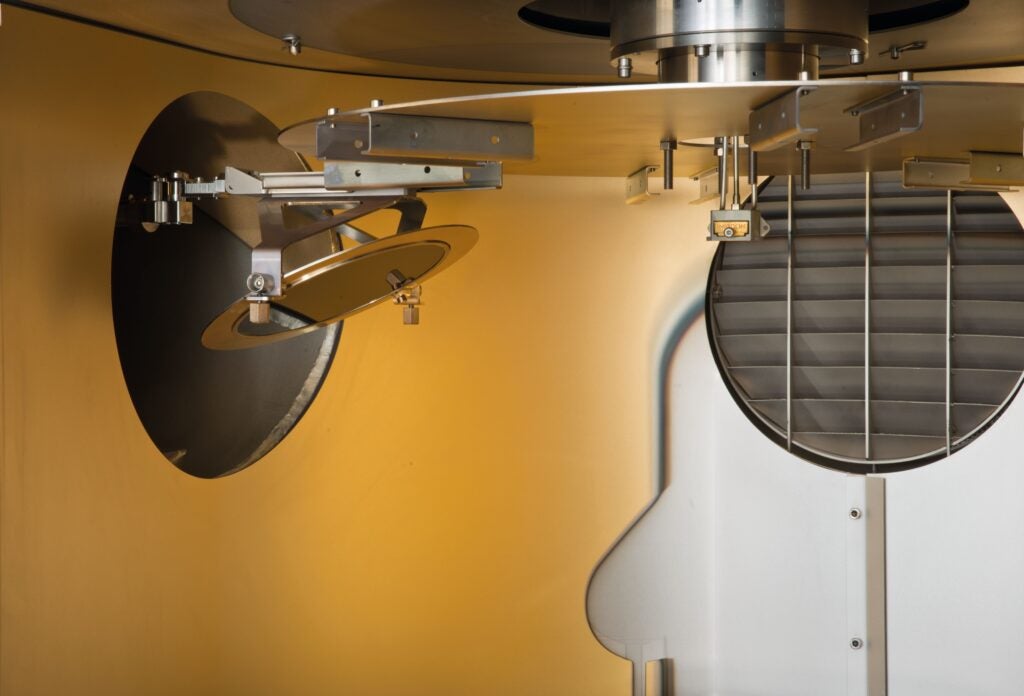
There are thousands of reasons why coatings get applied. Whether from a machine’s actions, chemical wear or something else, wear protection coating increases the tool’s lifetime. In addition, it can also be used to change functional or aesthetic characteristics – for example, making a plastic part look metal. These demanding processes are necessary for the highest quality requirements and therefore have a huge economic benefit.
But how can customers secure a solid output? And what can the operator do to avoid interruptions?
Choosing the right equipment
A deposition in PVD or CVD can only be applied under vacuum conditions. This makes vacuum, and pumps required to generate it, an essential part of the coater’s production – thoroughly tailored to the application, ensuring the right vacuum equipment is being deployed. Of course, this also means maintaining the equipment in the correct manner.
Dr. Klaus Deutscher is an application engineer at Pfeiffer Vacuum. He outlines why drawing on the expertise of a firm like Pfeiffer Vacuum is the best way to ensure the correct vacuum and pumps are being deployed at the right point in the process, guaranteeing a coating’s quality: “Not every vacuum solution is suitable for every type of application. Because vacuum components suffer from alternating requirements.”
Different processes, explains Deutscher, need very different inputs: “For example a DLC requires a particular kind of oil which is compatible with the dust coming from the process chamber. The choice of the wrong oil will cause the pumps to fail, because the dust is clogging the oil channels in a pump. Using another type of oil keeps the dust in suspension, preventing the channels from being clogged.” Oil and accessories are important considerations to ensure long life working conditions for a pump.
The role of vacuum for PVD/CVD
Firstly, it is impossible to have a PVD or CVD process without vacuum. In a PVD process, for instance, the material to be deposited on the tools is called the sputtering target. Vacuum conditions are a precondition to having the solid material vaporized by, for example, arc discharge.
Depending on PVD or CVD type coatings the pressures range varies from 10-4 mbar up to 10 mbar.

A wear protection workstream should work as follows. First, the tools will be cleaned, sharpened and placed on the handling system of a coating machine. The handling system is inserted into the coating chamber, and the door is closed. This is where the vacuum pumps come in. While pumping down to the right pressure the chamber and all containments get heated up to the suiting temperature, both depending on the deposition required. This is the precondition for applying the wear protection layer. After the process is finished the gas supply is closed off, the machine cools down and the vacuum pumps are disconnected. The machine is vented and the doors are opened, leaving the parts ready for further steps.
A helping hand is never far away thanks to Pfeiffer Vacuum’s knowledge.
Dr. Deutscher’s top three tips for coaters:
- Bring in only properly cleaned and dried targets. Otherwise the pump down rates are extended or you will not reach process pressure.
- Changing the pressure and fiddling with the settings has impacts on output both quality- and quantity-wise. A reliable measurement of the key values combined with an intelligent control system support stabilizing the process.
- Don’t stop the vacuum pumps. Let them run, even if you’re not using the machine. This prevents the temperature and pressure in the pump to vary, causing unwanted condensates to pollute the pump.
The centrality of vacuum technology to production cannot be overstated. Wherever you’re unsure in the wear protection workstream – whether it’s deciding the right vacuum conditions for a particular coating, why different components are needed for different pressures, the various pumps on offer or something else altogether – Pfeiffer Vacuum can support and advise you.


